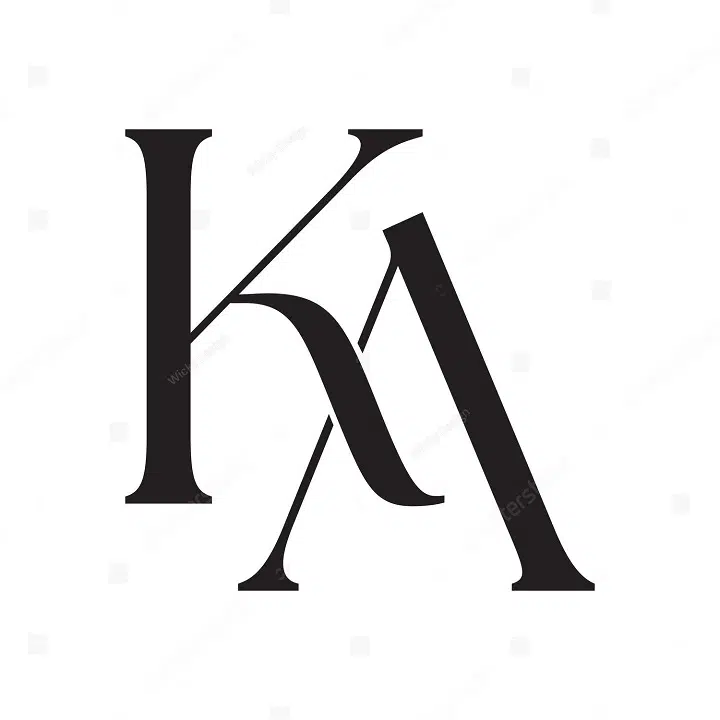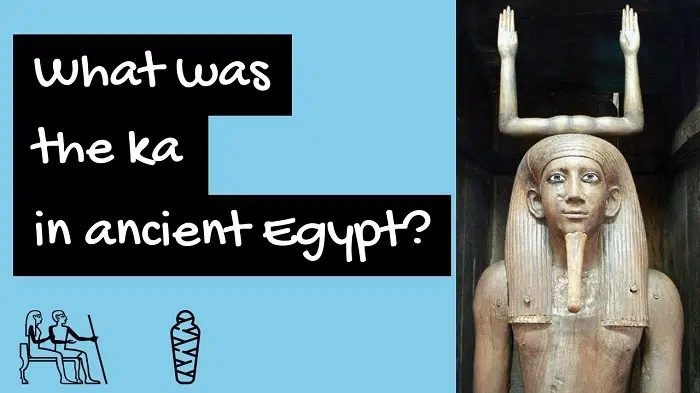You’ve seen those Egyptian walls, right? All those weird signs? Look closely. See the person with arms up? That’s the Ka.
It’s not just art. Nope. This was huge for old Egypt folks. The Ka meant life. Spirit. The part that lives forever. They thought we all had one.
Let’s walk through this. Nice and slow. What’s the Ka really mean? Where’d it come from? Why’d Egypt care so much?
What Is the Ka Symbol
The Ka looks like two arms going up. Like this: U. Sometimes it’s on your head. Or next to a name. It’s a picture-word. You know, like their writing.
But wait. This wasn’t just a letter. It meant stuff. Big stuff.
The Ka was your life spark. The thing that made you alive. Gave you power. Made you move. Made you, well, you. When did you die? The Ka left. But it didn’t die. It kept going somewhere else.
So no, not a soul. More like your energy. Your real self. The part that won’t die.
The Ka in Ancient Egyptian Belief
Egypt folks didn’t think death was the end. Life kept going, just different. The Ka was key to that.
They thought we had parts:
• Body (the you that you see)
• Ba (like your soul)
• Ka (your life spark)
• Shadow and name (both holy)
Does the body stop? Ka doesn’t. But it needs food. Water. That’s why they left bread in tombs. And beer! Not gifts. Fuel. Ka fuel.
What the Word “Ka” Means
“Ka” is an old Egypt story. It means spirit. Or twins. They thought your Ka was like another you. Can’t see it. But it’s there.
Born? Ka’s born too. This god, Khnum, made people on a wheel. Like clay. Make your body. Make your Ka. Same time. From then on, Ka’s your fate.
Die? Ka stays near. That’s why they made mummies. The body stays good. Ka can visit.
How the Ka Was Shown in Art
In tomb art, Ka’s those raised arms. Sometimes it’s a tiny copy of you, right there, next to you.
Kings, their Ka was special. It showed their power, even after death. Big deal.
Temples had Ka statues. Not just pretty. Egypt folks thought the Ka lived in them. Priests fed them every day. Food. Smells. Flowers.
The Ka and the Afterlife
Dead world? Ka was huge there. It went to meet gods. Big trip.
They thought the Ka needed stuff. Same as when alive. Food. Water. Comfort. So the tombs were full of stuff. Everything a Ka might want.
Get this, Ka doors. Tiny holes in stone. Ka goes in. Ka goes out. Living world. Dead world. Back and forth.
Happy Ka? You live forever. Hungry Ka? Broken tomb? My soul hurts. That’s why tombs were holy.
The Ka of the Pharaoh
Normal folks, Ka’s their life spark. Kings, way more. Their Ka was godly.
Kings’ Ka came from gods. Passed down, king to king. Same holy power. Always.
Made kings more than human. Their Ka, direct line to gods. Worship the king? You honor his god-Ka.
The Ka Statue
Ka statue, special tomb art. Built for the Ka. Mummy breaks? No problem. Ka has a home.
Looked just like the person. Some sat. Some stood. King Hor’s is famous. Really famous.
These statues were treated like they’re alive. Priests gave food, drinks, and prayers. Kept the Ka happy, peaceful.
The Ka and the Ba
Ka and Ba were a team. Ka stays at the tomb. Ba flies around.
Ba looked weird, bird body, human head. Each night, Ba visits Ka and body. They join up. Make the Akh. That’s the blessed spirit. Lives with gods forever.
Think of it like:
• Ka = life spark
• Ba = your personality
• Akh = forever spirit
That’s how they explained living forever.
The Ka Symbol in Hieroglyphs
In writing, Ka was big. Those lifted arms, super meaningful.
Next to a name? Shows honor. Kings had it lots. It means “king’s spirit.”
Temples had Ka signs everywhere. Prayers. Offerings. Spells. Meant life. Blessing. Power.
The Ka in Tombs and Temples
Every tomb had Ka signs. Walls, doors, statues. Make it holy.
People left food there. The Ka sign said death isn’t the end, just different.
Temples had Ka houses. Priests took care of god spirits, king spirits. Did rituals. Kept Ka strong. No rituals? Gods lose power. The world falls apart.
The Ka and the Concept of “Life”
Ka wasn’t just death stuff. It was life too. Strong Ka? Happy life.
People prayed for good Ka. Thanked gods for Ka, for strength, food, breath.
Even hellos used Ka. “Good Ka to you.” Like saying “be healthy.”
Art showed Ka with food, family, joy. It means being alive is good.
Also Read: Post Office Symbol Explained: Meaning, History, and What It Really Represents
The Ka and the Gods
Gods had Kas. Super strong ones. Each god’s Ka gave them power.
Ra, sun god, many Kas. One for each light type. Osiris, death god, strong Ka watching the dead.
Daily temple stuff? Not feeding statues. Feeding god Ka. Food, water, perfume, all holy.
The Ka in Modern Culture
Today we still say “Ka.” Books, museums, movies even.
Ka symbols on jewelry, tattoos, art. People wear it for energy, protection, and balance. Some think it still works. Life and spirit together.
Games, comics, Ka shows up as souls, energy, guardian spirits. The idea lives, just like Egypt said.
What We Learn from the Ka
Ka shows how old folks saw life. A world full of invisible energy. Everything had spirit inside.
Shows they cared about respect. Honored dead. Valued balance. What you do now shapes what’s next.
Ka says energy doesn’t die, just changes.
How to Recognize the Ka Symbol
Want to spot it? Look for:
• Person with arms up
• Arms like a big U
• Next to names or statues
It’s on tomb walls, near food tables, in old writing. Simple look, but means everything, life itself.
The Ka symbol is the most powerful Egyptian idea. Two arms up, calling for life, energy, connection.
To Egypt folks, Ka proved life doesn’t end. It’s the invisible you. Keep going, even when your body rests.
Tombs, temples, carvings, prayers, Ka meant everything, creation, strength, forever life.
So next time you see those lifted arms, remember. Not just old art. It says inside you, there’s a spark that never fades. Egypt called it Ka.



